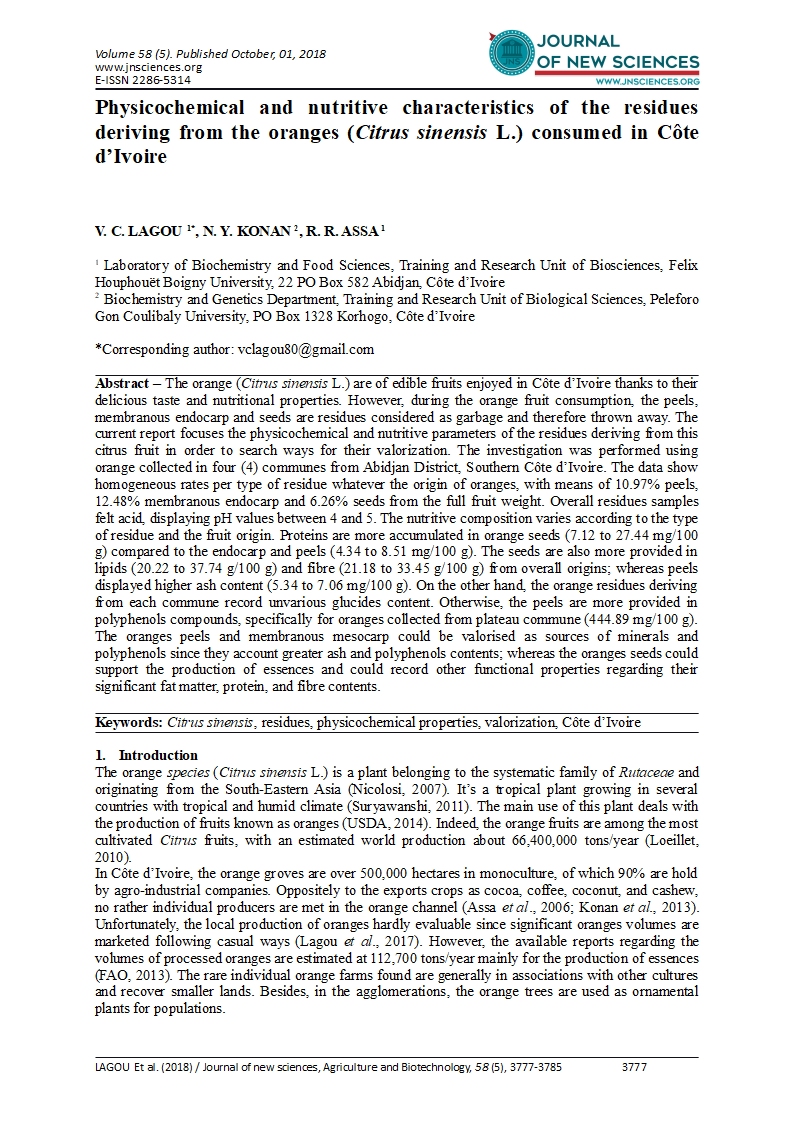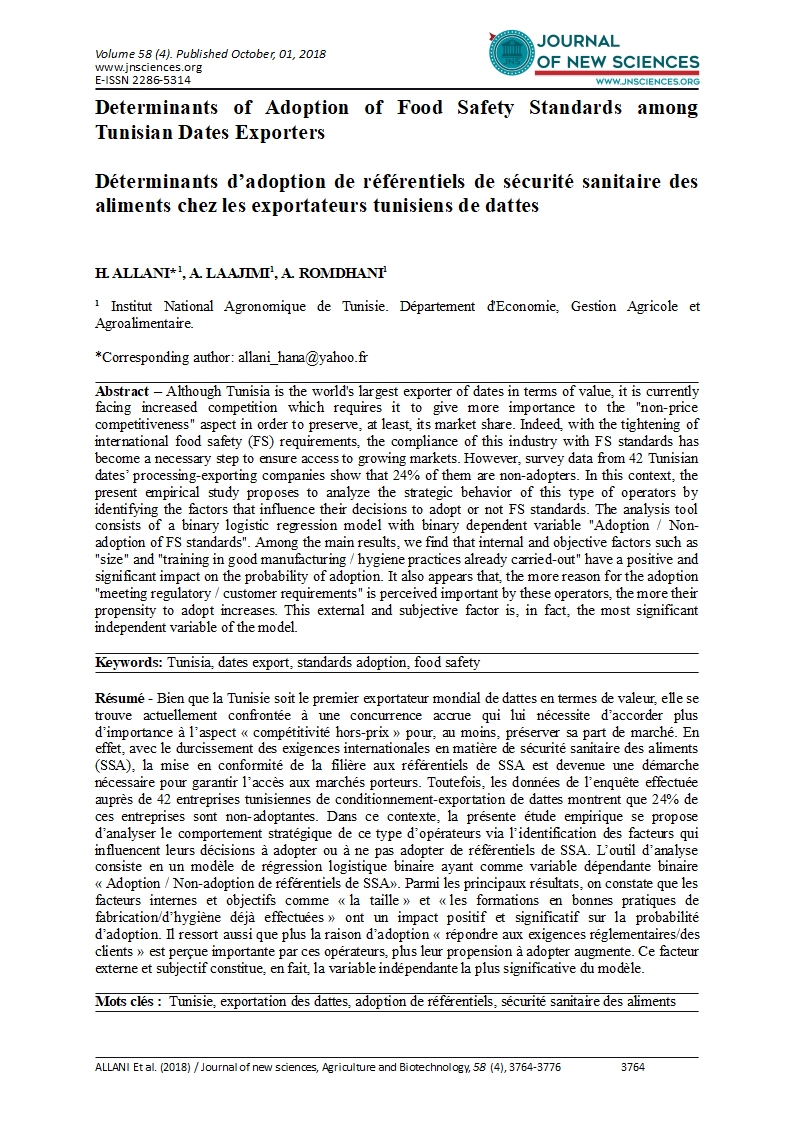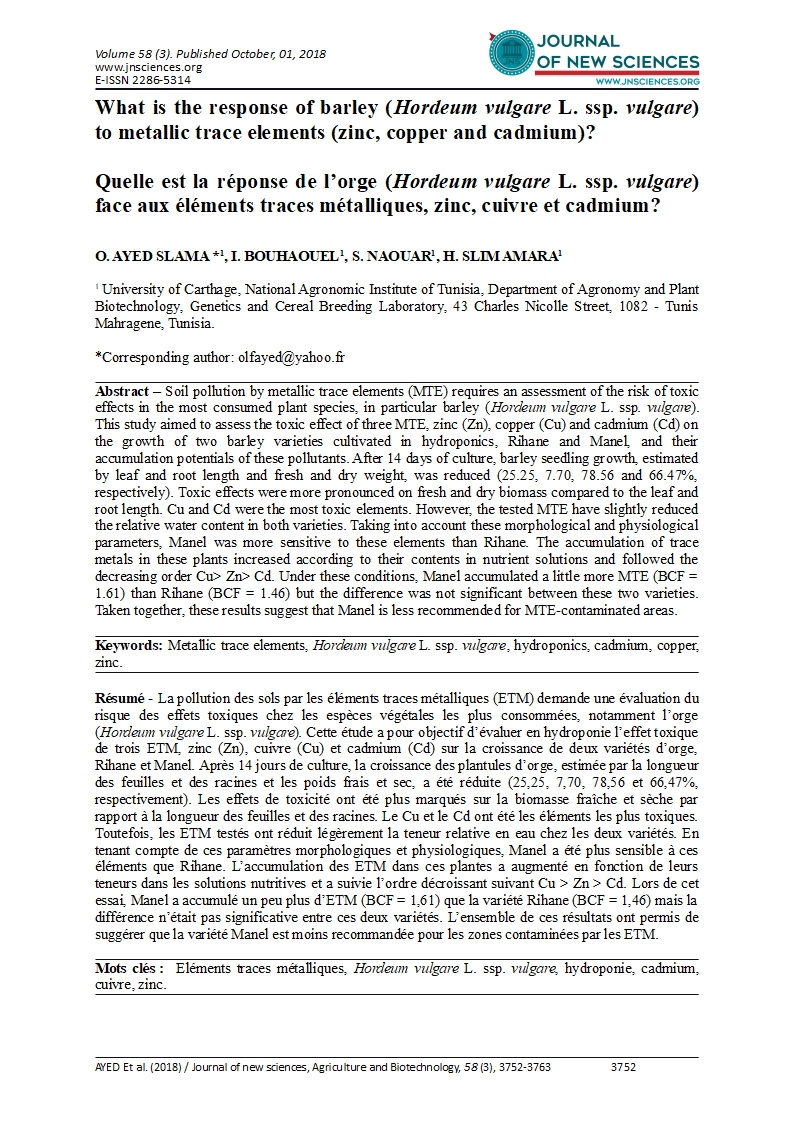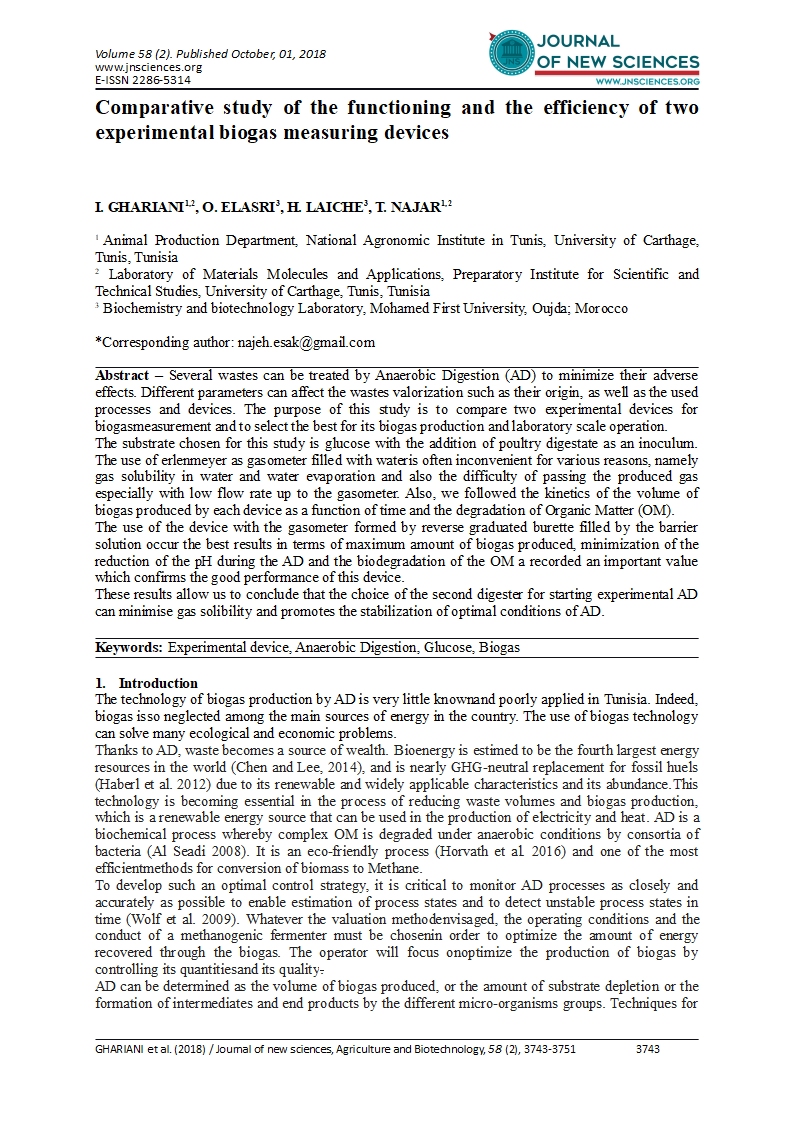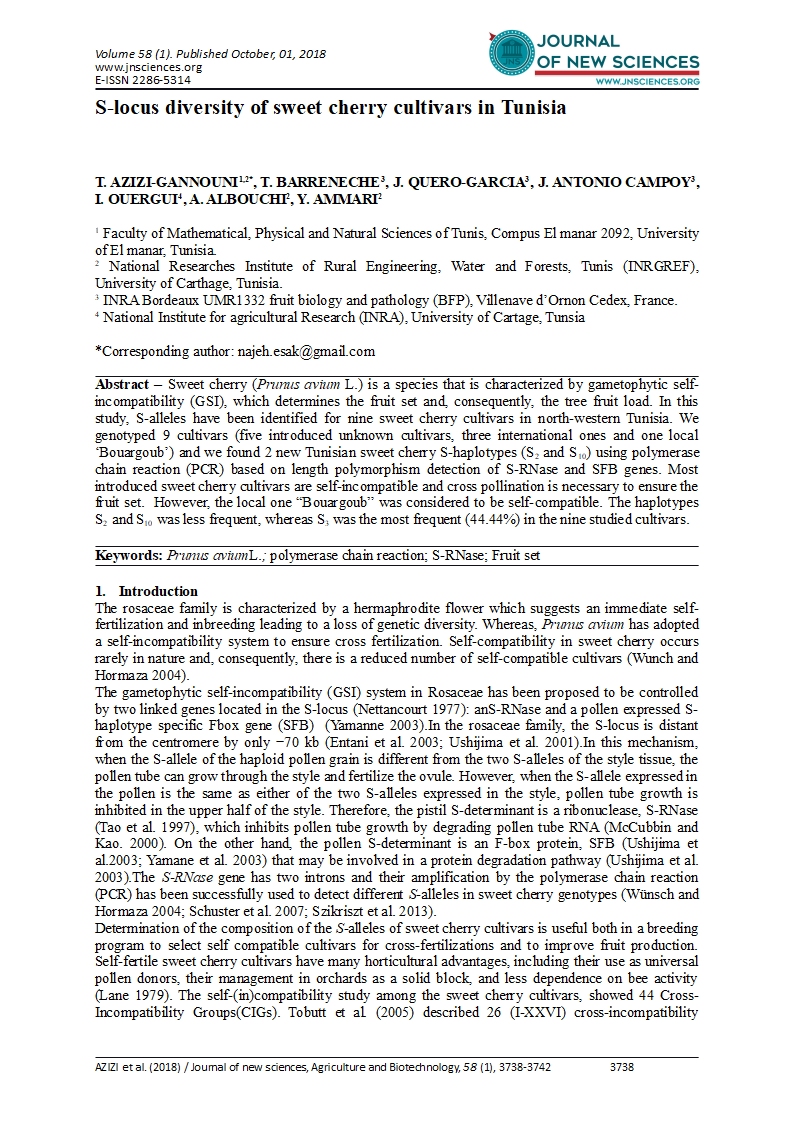- Category: volume 58
- Hits: 4147
Influence of sepia soaking on textural parameters of conserved carp fillets (Ctenopharyngodon idella)
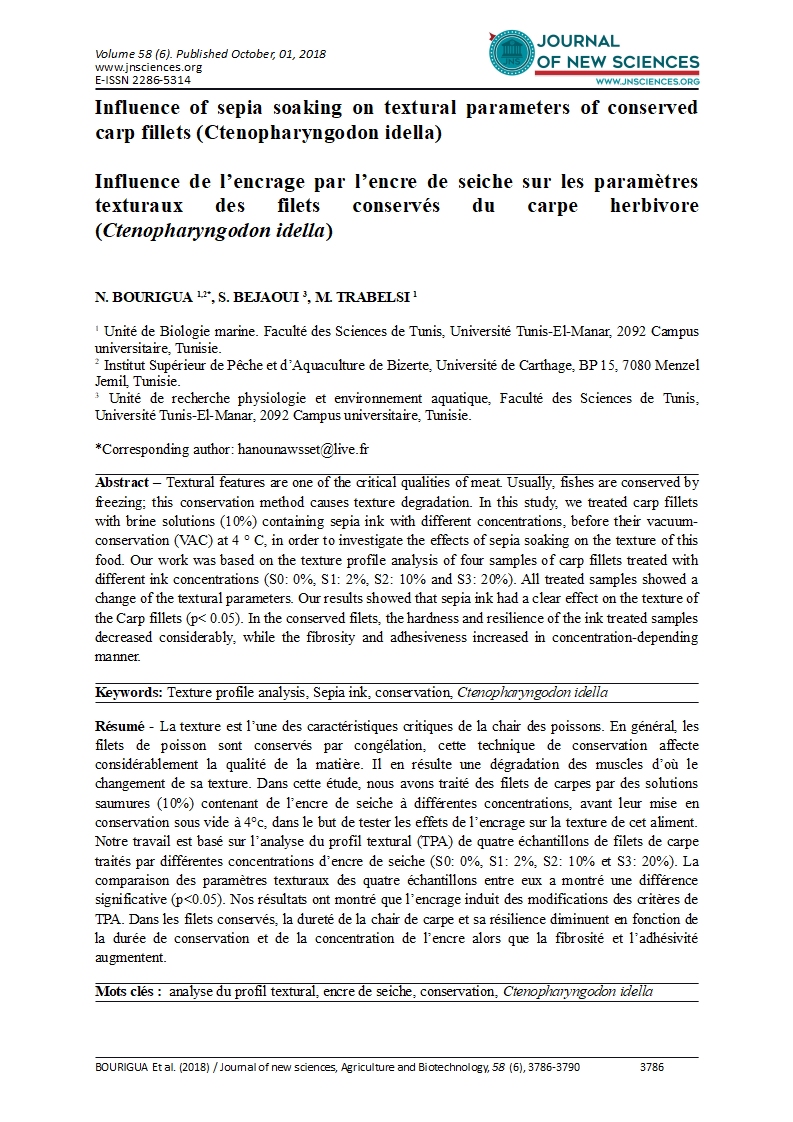
Influence de l’encrage par l’encre de seiche sur les paramètres texturaux des filets conservés du carpe herbivore (Ctenopharyngodon idella)
N. BOURIGUA 1,2*
S. BEJAOUI 3
M. TRABELSI 1
1 Unité de Biologie marine. Faculté des Sciences de Tunis, Université Tunis-El-Manar, 2092 Campus universitaire, Tunisie.
2 Institut Supérieur de Pêche et d’Aquaculture de Bizerte, Université de Carthage, BP 15, 7080 Menzel Jemil, Tunisie.
3 Unité de recherche physiologie et environnement aquatique, Faculté des Sciences de Tunis, Université Tunis-El-Manar, 2092 Campus universitaire, Tunisie.
Abstract – Textural features are one of the critical qualities of meat. Usually, fishes are conserved by freezing; this conservation method causes texture degradation. In this study, we treated carp fillets with brine solutions (10%) containing sepia ink with different concentrations, before their vacuum-conservation (VAC) at 4 ° C, in order to investigate the effects of sepia soaking on the texture of this food. Our work was based on the texture profile analysis of four samples of carp fillets treated with different ink concentrations (S0: 0%, S1: 2%, S2: 10% and S3: 20%). All treated samples showed a change of the textural parameters. Our results showed that sepia ink had a clear effect on the texture of the Carp fillets (p< 0.05). In the conserved filets, the hardness and resilience of the ink treated samples decreased considerably, while the fibrosity and adhesiveness increased in concentration-depending manner.
Keywords: Texture profile analysis, Sepia ink, conservation, Ctenopharyngodon idella

